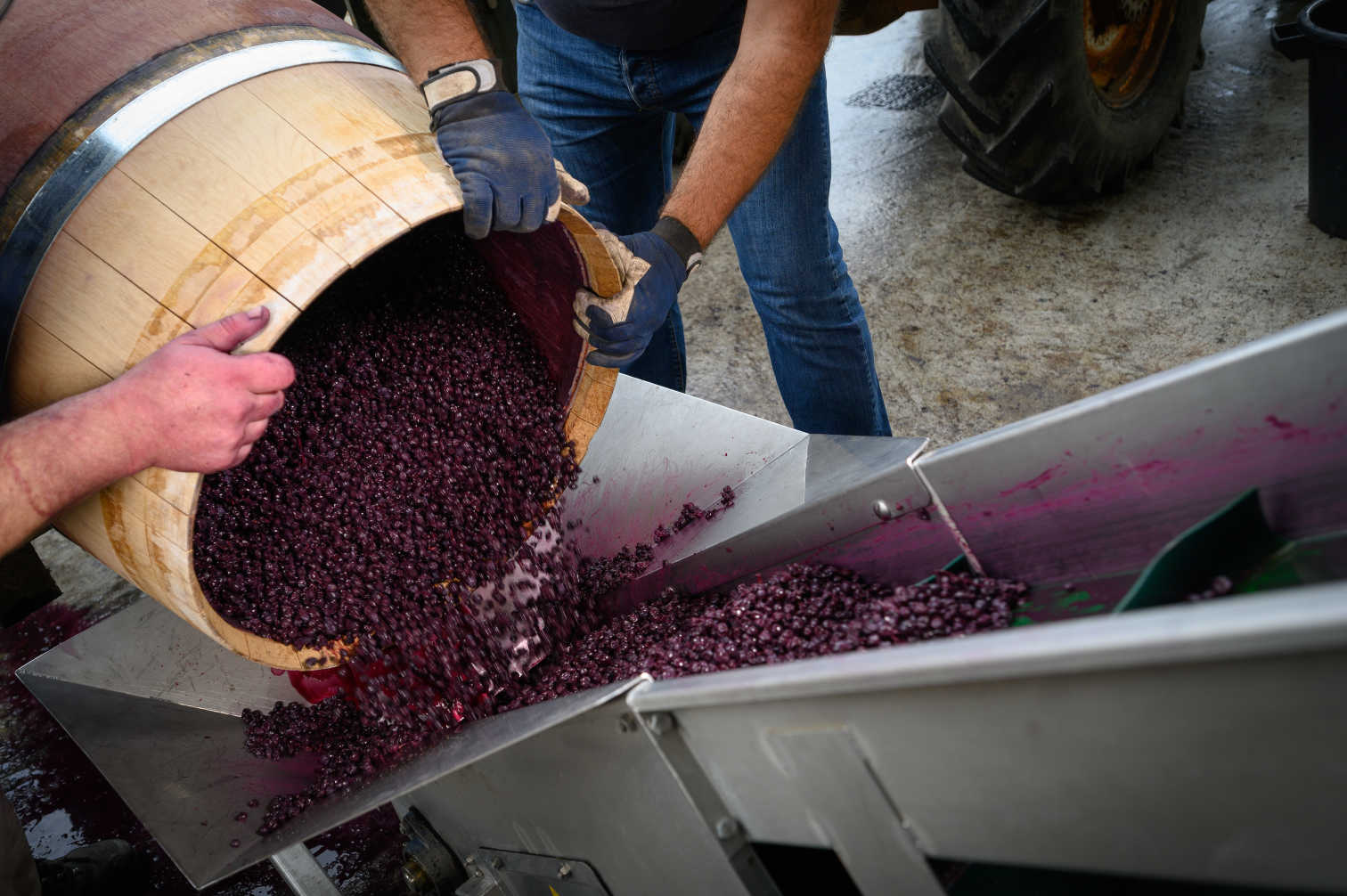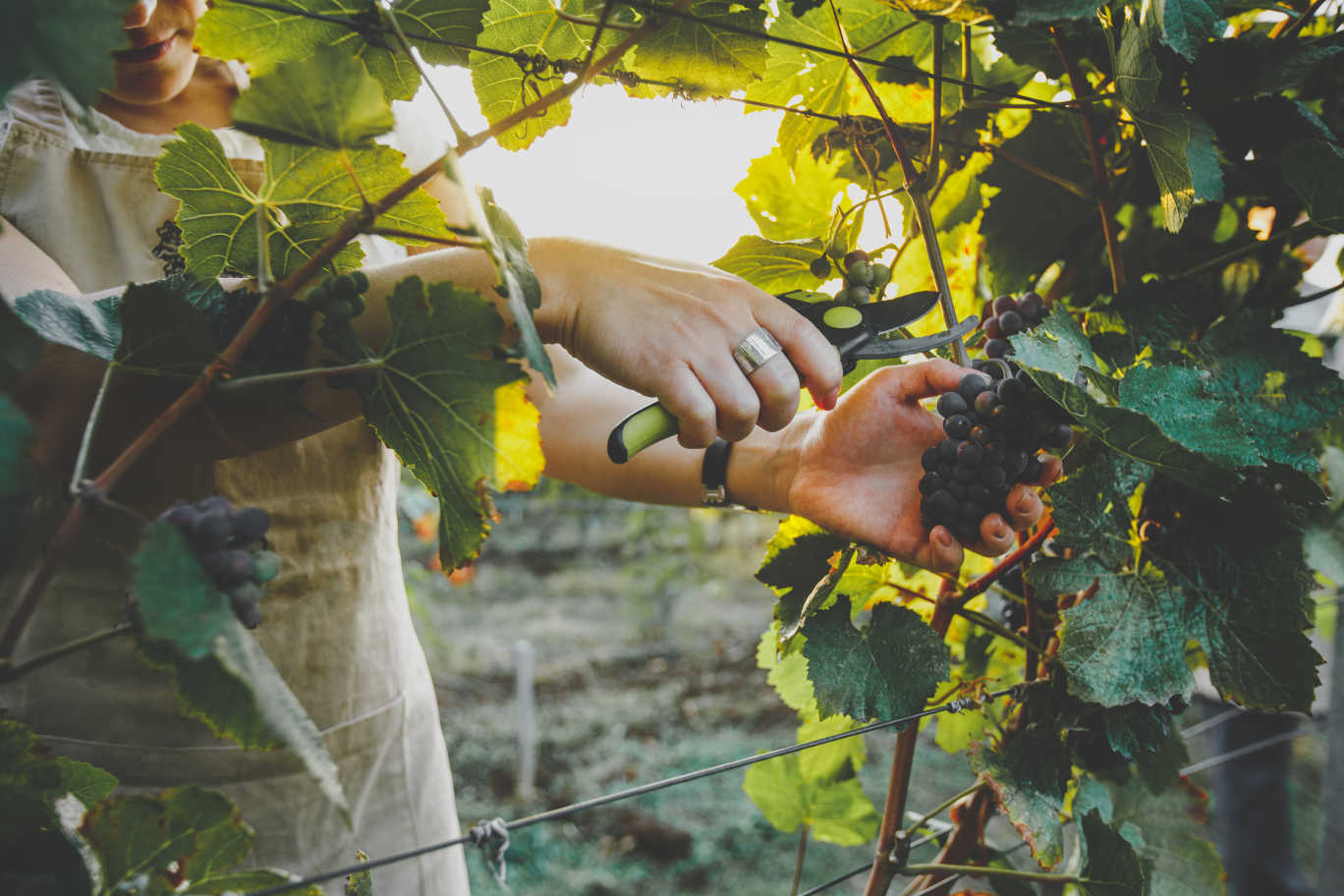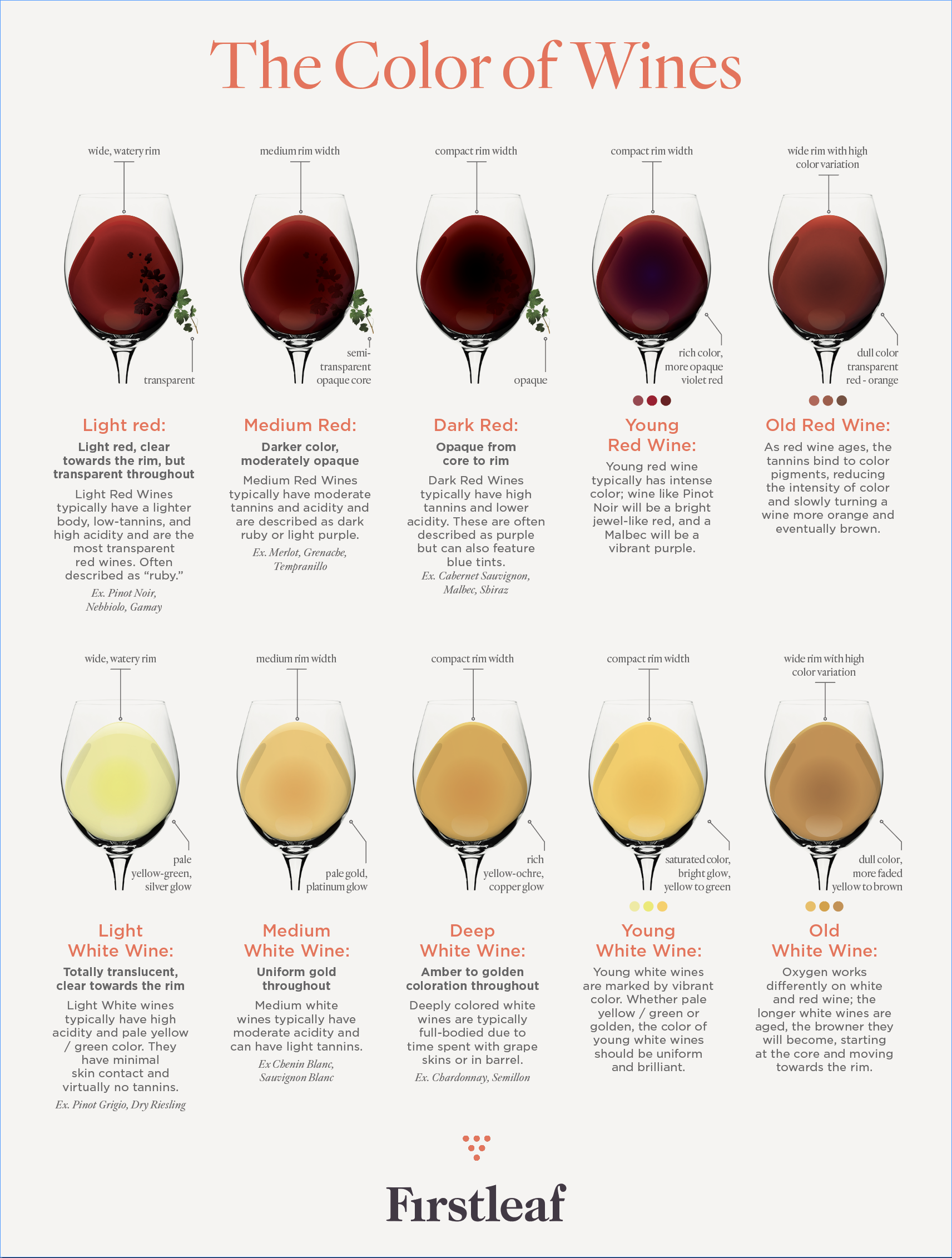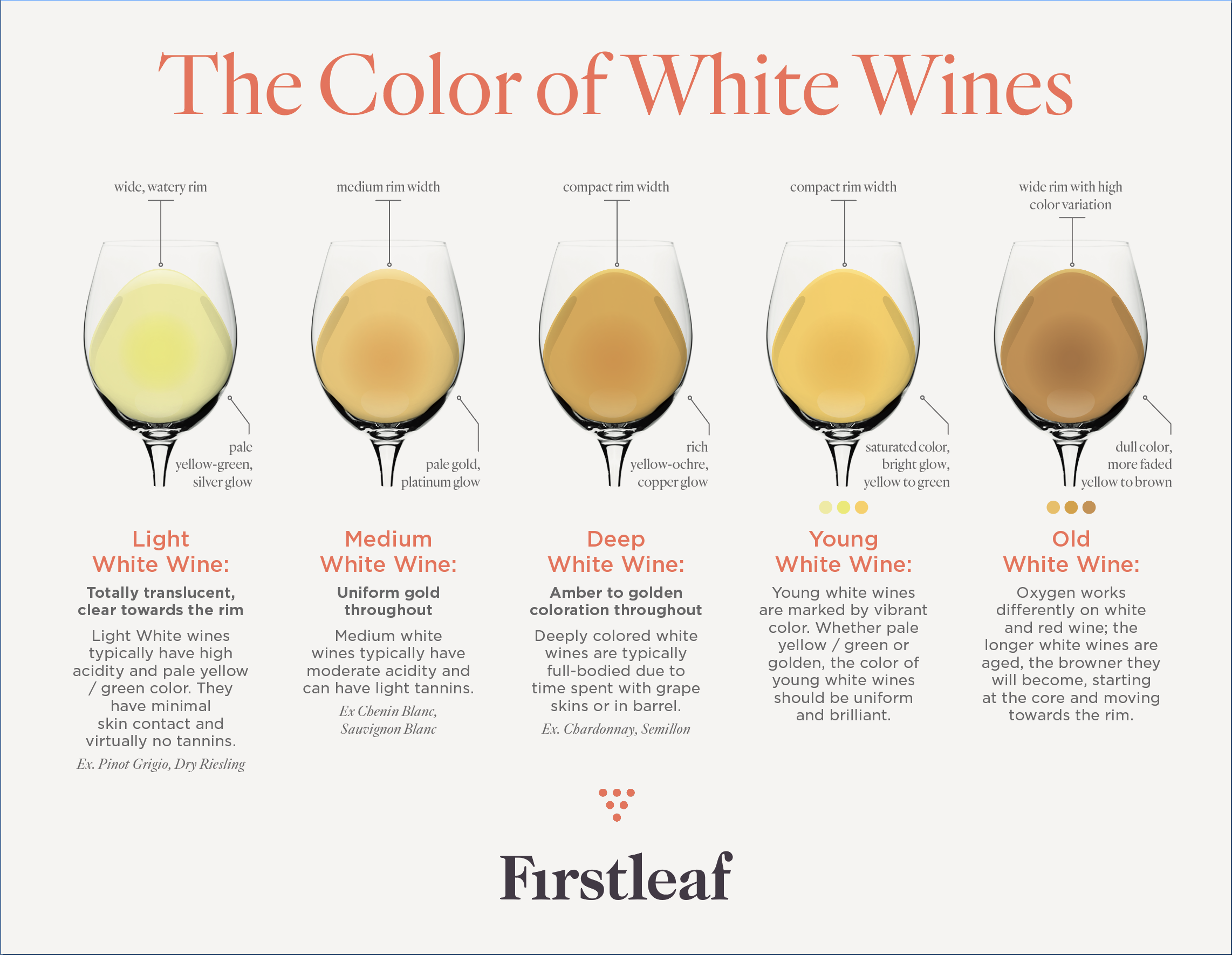Guide to Wine Color
The colors that show through your wine glass can tell you more about what a wine will taste like than you might think.
The color of wine is something that wine lovers pay attention to, but not in the ways that you might think. For a lot of wine drinkers in the 1980s, color was synonymous with quality. A deep, inky, opaque Cabernet Sauvignon was surely better than the clearer, garnet-colored one, right? Not exactly. Interpreting color is complex and should be viewed as a framework for evaluating wine instead of a “wine rule.”
The next logical question is: what does color tell us? As a general guide, the deeper the color, the heavier the wine structure (often higher tannins and alcohol). If you know that you are drinking a varietal wine like a Pinot Noir, the color can give you clues as to how it was made or what style the winemaker was using. If you are wine tasting blind, the obvious categories like red, white, or rosé will be the first step, but the tint of the wine can give clues as to grape, age, acidity, structure, and winemaking style.
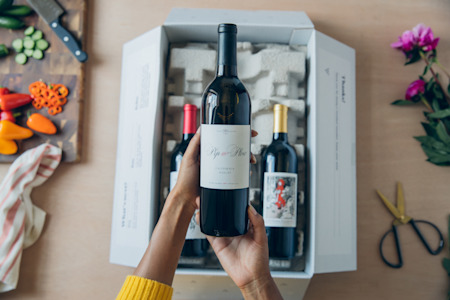
Take The Quiz
Learning about different wine varietals and regions is fun. Take the quiz now to explore wines matched to your unique palate.
Take The QuizIN THIS ARTICLE:
Where Does Wine Color Come From?
Every grape variety has natural compounds that form the building blocks of wine color. While many components shape the outcome of a wine, in red grapes, it’s anthocyanins that kick off the process. These pigment compounds live in the grape skins, and it’s a common misconception that grape juice is red. Try squeezing grapes from the grocery store, and you’ll see that the liquid is clear. This is why the winemaking process is much more important than the initial amount of compounds in the grape skins. The longer grape juice sits with the skins (no matter the grape), the more color and structure it will soak up.
During the winemaking process, the anthocyanins interact with the tannins in the fermenting grape juice and create pigmented tannins that will color the wine for the rest of its life. Anthocyanins are inversely proportional to the ph level. The lower the ph (i.e. the more acidic the wine), the more vibrant the color will be. This is referred to as ”brightness” in a wine. Over time, the anthocyanins will continue to interact with the other compounds and precipitate out in the form of sediment, which is one of the reasons why wines that were formerly very bright become dusty red/brown over time.
It should be noted that brightness and clarity are two different things. As we’ve discussed, brightness is related to anthocyanins and acidity, whereas clarity is all about the opacity of wine (i.e., you see through it).
White wines are a little different as they aren’t actually white. You can even make white wines with red grapes. White wines gain their yellow-ish color from phenolic compounds interacting with UV rays. Over time, oxidation combined with UV exposure will cause the wine to turn golden and then brown.
Assessing Color
If you are planning your next wine tasting, we have a few tips for assessing color for different types of wine. To make things easier, we’ve created a color chart infographic with the basics below. The most important tip is to pour only a small amount, maybe one and a half or two ounces, in your wine glass, before holding it over a white piece of paper. This will allow you to see the brightness and opacity. The color of many wines tapers off towards the rim of the glass.
Red Wine Colors
Light Red Wines:
Light red wines will typically be very bright, which means high acidity and less structure. They will often be described as pale ruby or pale garnet (garnet is a little more reddish). The Pinot Noirs of Burgundy, Nebbiolo, and Gamay (Beaujolais) are all likely candidates for this category.
Medium Red Wines:
Medium red wines will typically be a bit less bright and more opaque than light red. The colors in this category can verge on purple. This translates to more structure and medium acidity. Grenache, Tempranillo, Sangiovese (Chianti), and Merlot can all fit the “medium” description.
Deep Red Wines:
These are full-bodied red wines that are almost entirely opaque and typically are highly structured with high tannin and lower acidity. The colors are purple and magenta. Bordeaux reds, Malbec, and Syrah are the typical candidates for deep reds.
Young Red Wines:
As we mentioned earlier, young wines have more anthocyanins and will be brighter, with peak fruit and harsh tannins. The color will be vibrant and bright red or purple.
Old Red Wines:
As wine ages, the anthocyanins bind to the tannins and fall out, and in doing so, pull some of the pigment and the tannins that used to color the wine. This process, combined with the minuscule amounts of oxygen that come through a cork, will cause the wine to turn dusty brick red and eventually brown. While it loses some fruit, aging creates other delicious flavors. If you’ve never tried any aged wines, just know that the flavors will likely be different from what you are used to.
White Wine Colors
Light White Wines:
As previously discussed, white wines aren‘t actually white. The lightest typically have a bright straw or light yellow color with high acidity and no tannins. The wines that most often fit this description are Pinot Grigio and Riesling, although the occasional champagne can sneak into this category.
Medium White Wines:
These wines are a bit more solidly yellow or gold. They have moderate acidity and occasionally feature tannins. Most white wines will fall into this category. The wines that hover in this range include Chenin Blanc, Sauvignon Blanc, and occasionally Chardonnay.
Deep White Wines:
Deep white wines are solidly golden and can glow with a rich brightness. These typically have a full body with lower acidity, with the exception of late-harvest sweet wines like Sauternes or Tokaji, which are viscous and highly acidic with no tannins. That being said, a barrel-aged Chardonnay usually falls here.
Young White Wines:
White wines are a bit different than reds, and a young wine will be clear and bright.
Old White Wines:
As white wines age, UV rays and oxygen interact with the phenolic compounds, slowly turning the wine amber and then brown. As with red wines, the more structured it is, the more likely it is to age well and develop delicious tertiary flavors.
Conclusion
We hope that this is helpful information that will continue your wine education. If you want to know more, head over to our wine school!
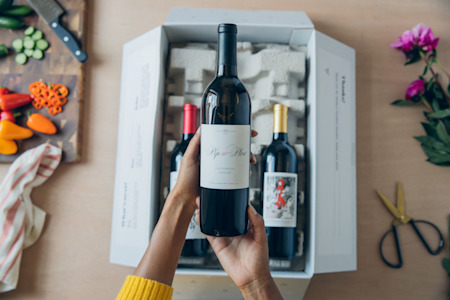
Take Our Quiz Today
Get award-winning delicious wines from all over the world shipped straight to your door. Take the quiz to get the perfect pairings for your holiday season.
Take The Quiz TodayIN THIS ARTICLE
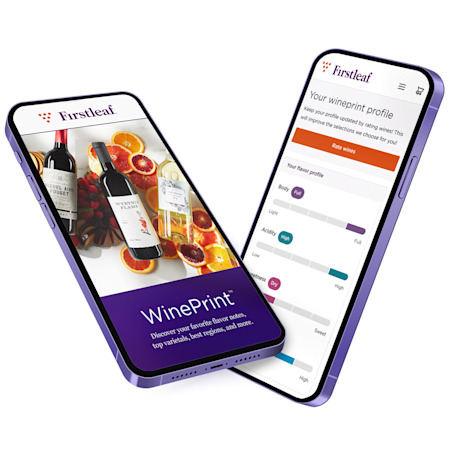
WinePrint™ by Firstleaf
Are you looking to learn more about your wine preferences? Check out our Wine Print for an in-depth look at your personal tasting profile. Discover your favorite wines, varietals, regions, and tasting notes and get personalized recommendations wherever you are.
Learn More